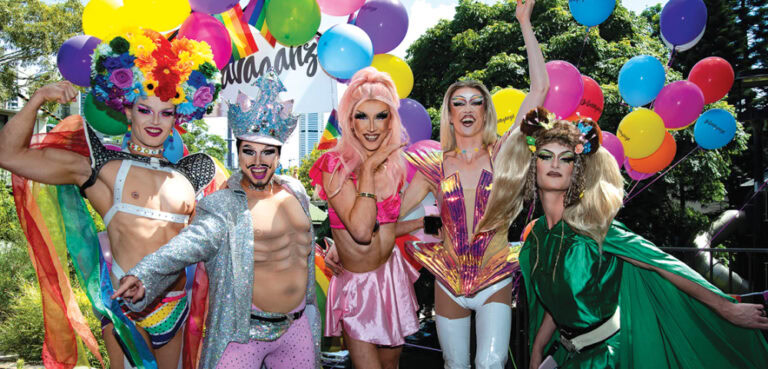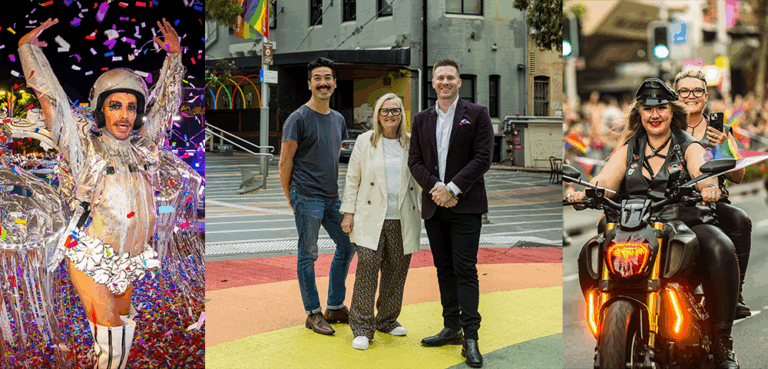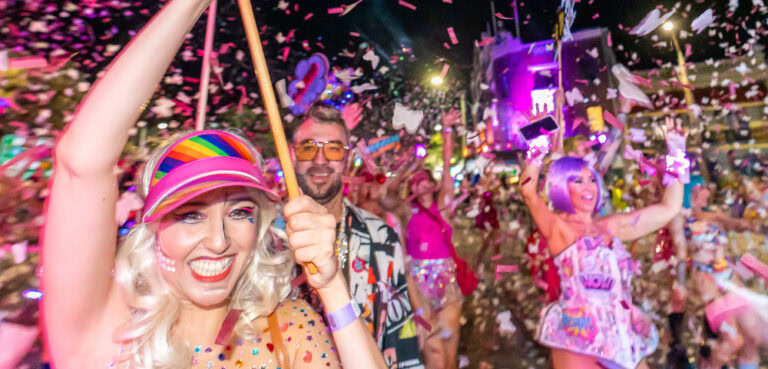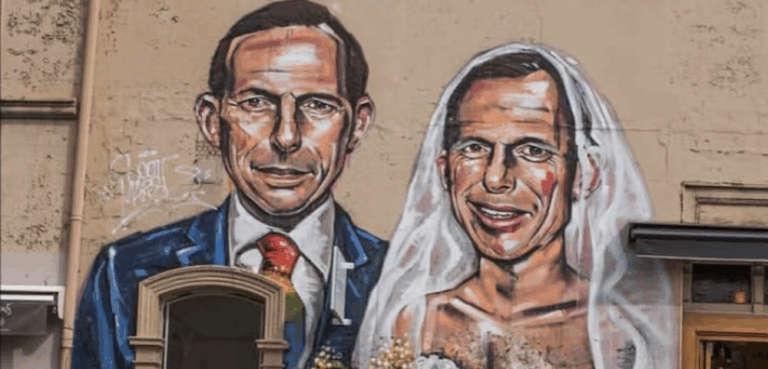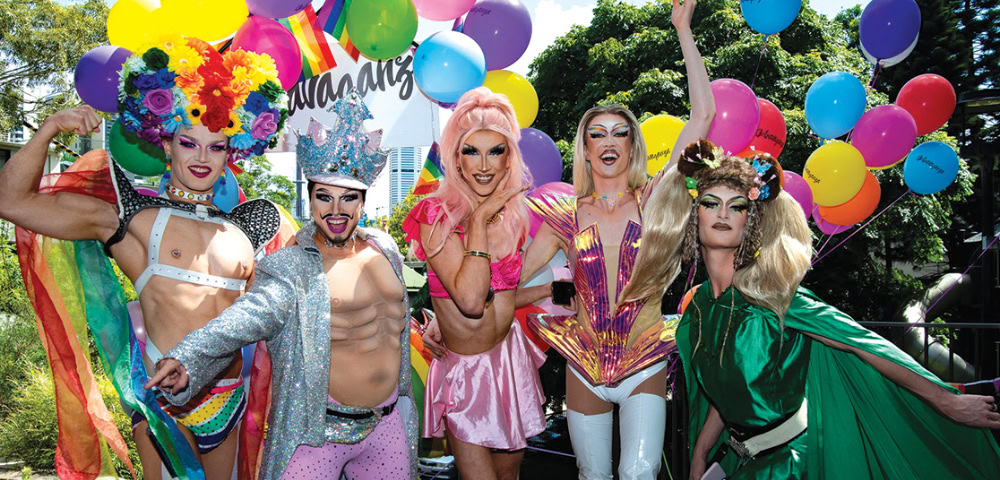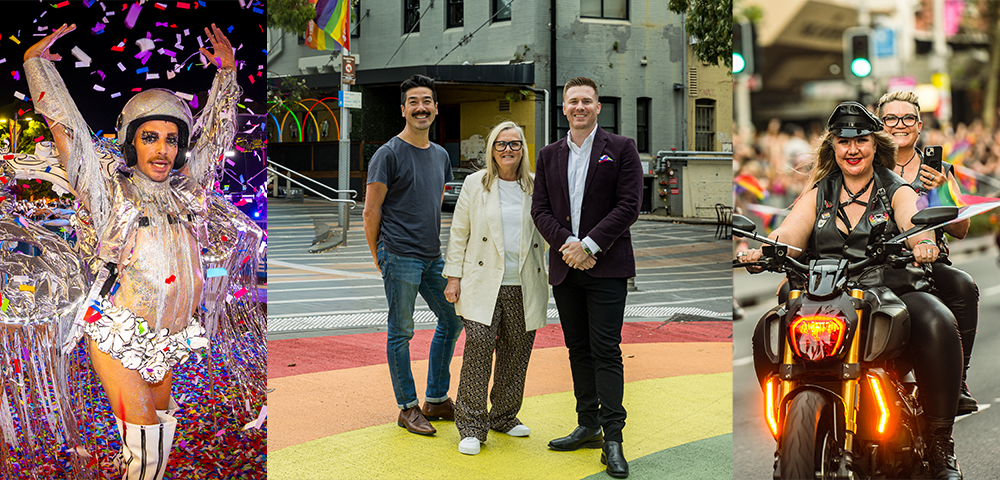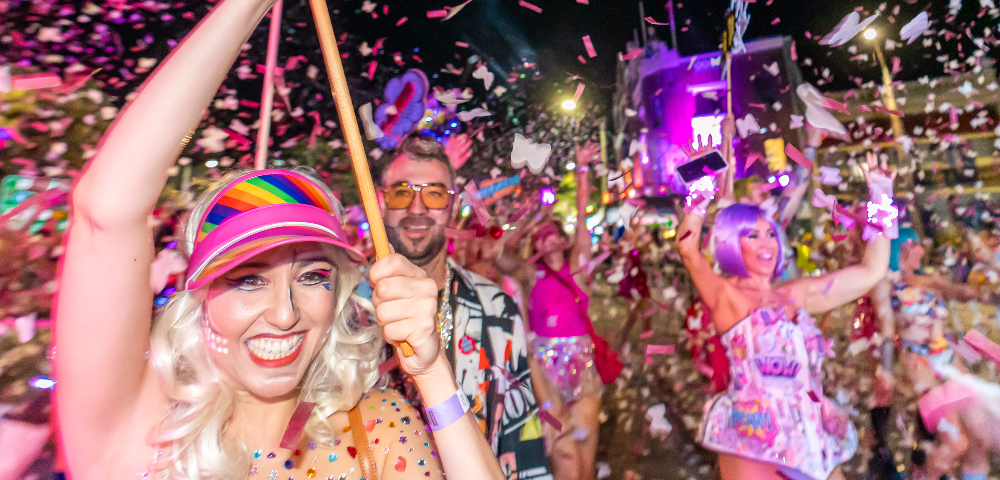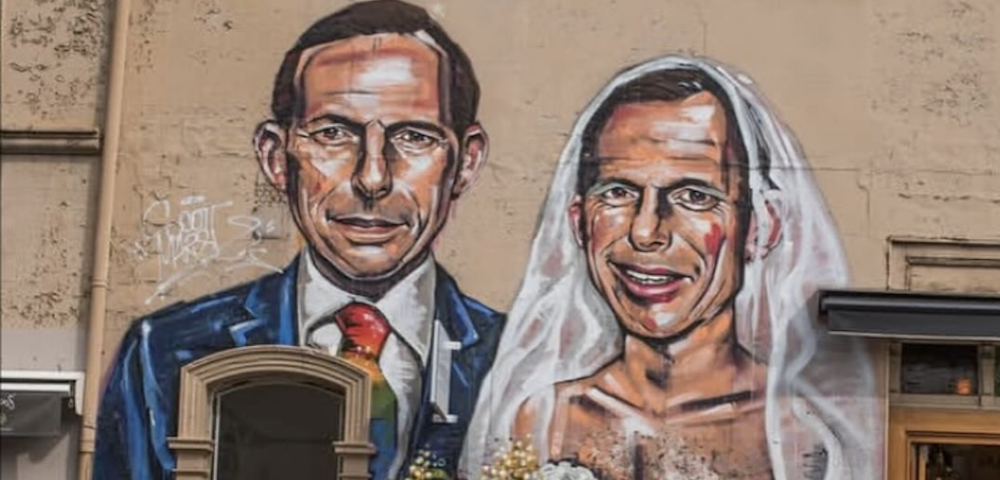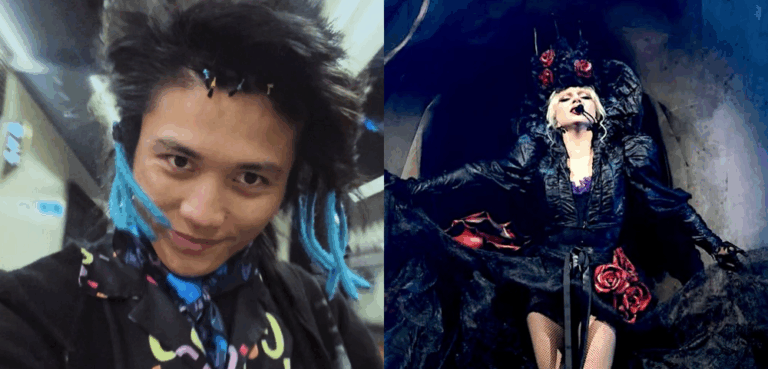
Ultraviolet exposure
When I first interviewed Mazz Image, in December 1999, she politely informed me that she didn’t do questions of a chronological nature. Specifically, she didn’t want to be drawn on her age, or how long she had spent photographing the denizens of Sydney’s gay and lesbian community.
Mazz may still be keeping shtum about her age, but the release of her new book, which documents the past 15 years of Mardi Gras, carbon-dates her -“ ever so slightly.
I first started photographing for the SSO at the beginning of 1990, she reveals. Before that I worked as the photo editor of the Village Voice -“ which looking back was more like a high school newspaper, but it was exciting at the time.
Since her first assignment (photographing the Drag Bags at the Albury Hotel) and first Mardi Gras parade (1989), Mazz has become one of queer Sydney’s most recognised faces. The electric purple hairdos of yesteryear may have mellowed into softer tones of fuchsia, but Mazz remains a striking figure on the scene.
When I first started photographing somebody said that I would never be a photographer because photographers should wear black and lurk in the shadows and be unnoticeable, she says.
But like the drag queens she befriends and photographs, Mazz made herself into her own special creation.
I dress how I feel like dressing. It wasn’t necessarily a conscious statement, she says. I’ve always liked dressing up and playing with make-up, like many a young friend who has become a drag queen.
Mazz’s signature look has given her a profile that has been of use in her career -“ after all, when she appears in a bar or at a Mardi Gras event, everybody knows what she’s doing. And because she’s been doing it now for 15 years, she’s accumulated a vast archive.
One of the joys of being a prolific photographer is that you have a lot of material to work with. I think there’s over a million negatives in the archive, she says. This, of course, proved rather difficult to cull for the new book.
The book celebrates Mardi Gras and the diversity within the community, she says. The 25th anniversary of Mardi Gras is an important time to reflect on this unique event. The images, most of which have been published in papers and magazines over the years, are like a time capsule of magical moments of people enjoying life.
I ask Mazz if she ever gets bored photographing people having a good time. Doesn’t she ever want to put the camera down and just dance the night away?
I remember doing that with my sister in the winter of 1990, she says. I woke her up and said, -˜We have to go out to dance.’ We went to Patchs at 3 in the morning and had a boogie. That’s the last time I recall really desperately needing to do that.
Patchs may no longer be with us, but photos of people mixing it up at venues and at Mardi Gras parties have been a staple of our community press for the past 15 years. So what’s the best way, I ask Mazz, to get her to take your photo?
Don’t stand against the bar feeling like you’re looking so fantastic that a photographer will approach you, she offers. The best thing to do is to come up and say -˜hi, can you take my photo?’ and chances are they will. There’s nothing better than an eager and willing subject.
